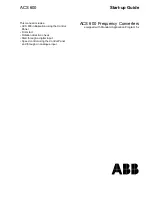
15
About time correction
The distance between the listener and the speakers in the vehicle can vary greatly due to the complicated speaker
placement. This variation of distance between the listener and the speakers may result in the variation in acoustic
image and frequency. This is due to the delay of sound arriving at the left ear and the right ear.
In order to solve the problem, this device can delay the audio signals transmitted to the speakers nearest the
listener. Thus it appears that the distance to these speakers is extended. It can equalize the distances between the
listener and the left and right speakers so as to obtain the best effect. Each speaker will be adjusted with a level
difference of 3.4 cm.
Examples of listener location is as follows:
Example 1: Left front seat
Adjust the time correction level of the front left speaker to a large value and that of the right rear speaker to 0 or
a small value.
The distances between the listener location and the speakers are different, and therefore the sound is not
balanced.
The distance difference between the left front speaker and the right rear speaker is 1.75 m (68-7/8").
Here we will calculate the time correction value of the left front speaker in the figure above.
Conditions:
The farthest speaker - listener location:2.25m(88-9/16")
Left front speaker - listener location: 0.5m(19-11/16")
Calculation: L=2.25m - 0.5m=1.75m(68-7/8")
Time correction=1.75
÷
343*
×
1000=5.1(ms)
*Sound speed: When 20
°
C, 343m/s (765mph)
In other words, when the time correction value of the left front speaker is set to 5.1 ms, its distance from the
listener appears to be the same as the distance between the listener and the farthest speaker. Time correction can
eliminate the time difference of sound reaching the listener's location.
The time of the left front speaker is corrected for 5.1 ms, so that sounds from it reach the listener location at the
same time as sounds from other speakers.
















































